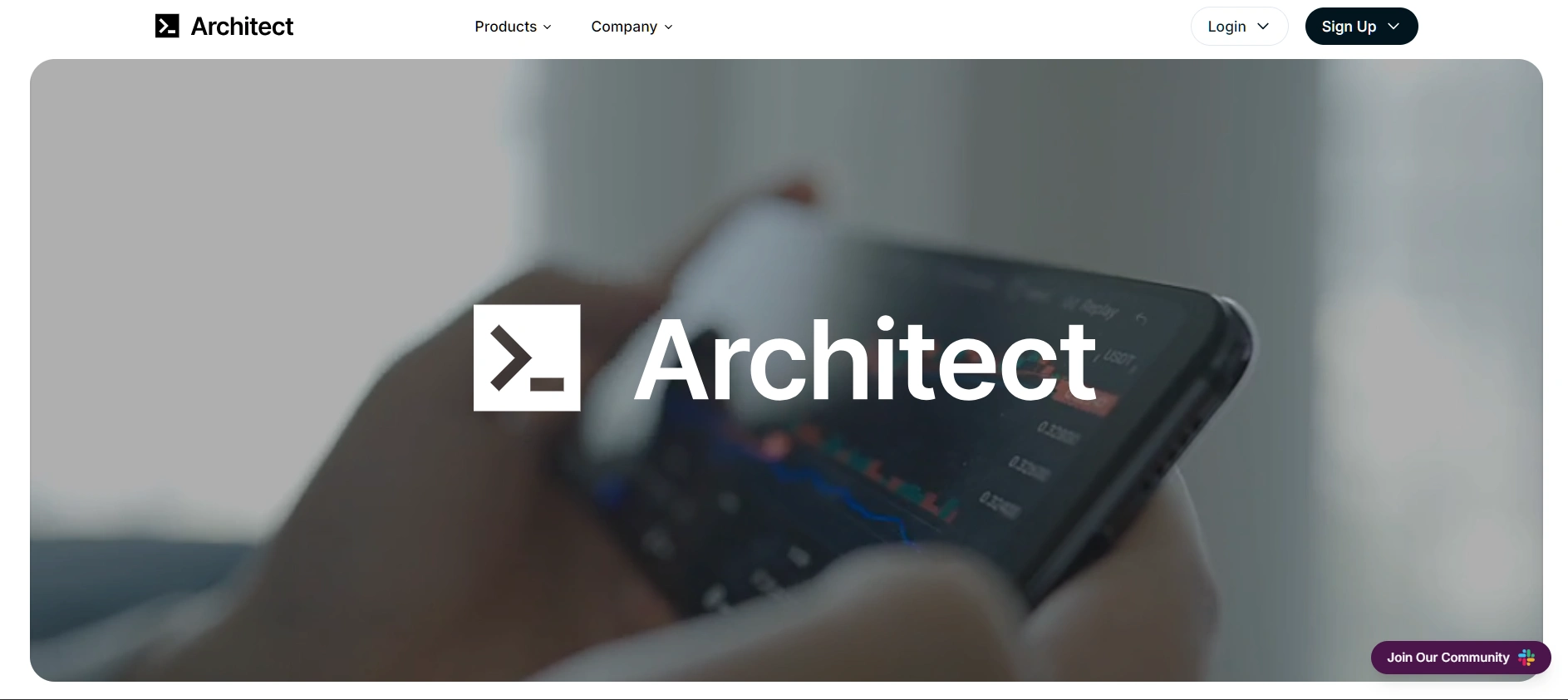Architect is an institutional next-generation fintech platform that combines brokerage services, derivatives trading, multi-market infrastructure, API integration and post-trade processing tools. The project creates a bridge between traditional markets and digital assets, offering a powerful technology stack for companies, trading firms, hedge funds and capital-markets solution developers. Unlike classical crypto projects, Architect does not aim to create a blockchain network; its goal is to provide a reliable and scalable infrastructure for accessing stocks, futures, derivatives and perpetual instruments, including real-time data, trade execution and modular process automation.
- Architect — platform capabilities and its place in the industry
- Service architecture and technical infrastructure
- Financial modules of Architect
- Who benefits from using Architect
- Limitations, regulation and key risks

Architect — platform capabilities and its place in the industry
Architect is a comprehensive technology platform for trading and financial asset management, designed for the institutional segment. Unlike most Web3 projects, it does not offer its own blockchain or token; instead, the company builds a highly reliable infrastructure compatible with traditional capital markets and modern digital tools. The project’s architecture covers access to stocks, options, futures, indices, currency pairs, derivatives and perpetual contracts.
The platform provides a full brokerage service, where Architect Securities LLC acts as a broker-dealer, and Architect Financial Derivatives LLC services futures and options. The presence of regulatory status makes the project attractive for companies that require compliance, transparency and reliability.
A special role belongs to the AX module — a perpetual contracts exchange for traditional assets such as currencies, rates and metals. It is a new market format focused on high-frequency strategies, institutional hedging models and flexible trading with minimal entry barriers. Architect integrates different types of data and provides real-time market information via API and SDK, making the platform universal for companies operating across multiple markets.
Service architecture and technical infrastructure
The Architect technical documentation describes the platform as a modular distributed system built on principles of high availability and low latency. Clients gain access to a powerful API, SDK and automation tools for order processing. Integration is available in Python, JavaScript, Rust and other languages. The system provides a unified technological layer for connection management, market data subscription, order execution, portfolio management and real-time transaction processing.
This approach simplifies interaction among different exchanges and instruments. The platform allows companies to build their own algorithmic trading systems, risk-management tools, and use OMS, EMS and PMS as a single environment for working with multiple asset types. The API key architecture ensures secure authentication and integration, while modularity simplifies infrastructure scaling.
Financial modules of Architect
The Brokerage module provides access to classical financial instruments such as stocks, ETFs, options, futures, indices and other assets. Thanks to regulation and licensed structures, users gain integration with major U.S. and global markets.
AX is a unique perpetual exchange offering tools for hedging and speculative trading without owning the underlying asset. This module is particularly relevant for funds and traders focused on high-risk or high-speed execution models.
The OEMS module combines the Order Management System, Execution Management System and Portfolio Management System into a single infrastructure. It enables large companies to use advanced execution routes, internal algorithms, risk controls and centralized position management.
The Post-Trade module handles final transaction processing such as accounting, reconciliation, P&L, reporting, cost analysis (TCA) and back-office integration. This automation reduces operational errors and accelerates reporting processes. As a result, all stages of the trade lifecycle — from order to reporting — remain within one technological environment.
Who benefits from using Architect
Before listing the user categories, it is important to understand the role Architect plays in various institutional strategies. The platform does not aim to replace existing systems entirely, but rather acts as an infrastructural “framework” on top of which trading and analytical solutions can be built. For some clients, it becomes the primary gateway to markets and a base for algorithmic trading; for others, it serves as a convenient abstraction layer connecting exchanges, brokers and internal systems.
Below are the key groups for whom adopting Architect is strategically and economically justified:
-
Hedge funds and prop-trading firms — need low-latency infrastructure, automation and convenient multi-market connectivity.
-
Asset-management firms and family offices — rely on flexible portfolio management and unified reporting layers.
-
Algorithmic trading teams and developers — use API/SDK to build and deploy trading algorithms and test strategies.
-
Fintech startups — deploy their products on top of Architect OEMS/EMS without heavy infrastructure or compliance costs.
-
Multi-market companies — combine stocks, derivatives, forex, crypto and perpetual contracts, using Architect as a universal connector.
For all these categories, not only the technology matters, but also the mix of regulatory reliability, transparency and the ability to build proprietary systems atop ready-made institutional infrastructure.
Limitations, regulation and key risks
Despite its broad capabilities, Architect is not a universal solution for all market participants. Understanding the limitations and regulatory specifics helps evaluate integration feasibility and risk profiles. Some clients may prioritize compliance requirements, while others may be affected by the absence of a decentralized blockchain network. Below is a summary of the key limitations and risks to consider.
| Category | Description |
|---|---|
| Regulation | Operating through licensed U.S. brokers requires KYC/AML and other regulatory compliance obligations. |
| No blockchain | The platform is not a decentralized network, which excludes Web3-ledger scenarios. |
| Institutional focus | Most functionality targets large companies rather than individual traders. |
| Technical complexity | API integration requires a qualified development team. |
| Derivative risks | Trading futures and perpetual contracts involves volatility and margin risks. |
These limitations outline the platform’s scope and help companies evaluate whether Architect fits their operational and strategic needs.
Architect represents a modern institutional infrastructure that unifies traditional and digital markets into a single technological environment. The platform covers all stages of trading — from order intake to post-trade operations — and provides powerful tools for funds, prop trading desks, algorithmic traders and organizations operating in global capital markets. For companies seeking a regulated, scalable and technologically flexible environment, Architect serves as a strong foundation for long-term trading ecosystems.




